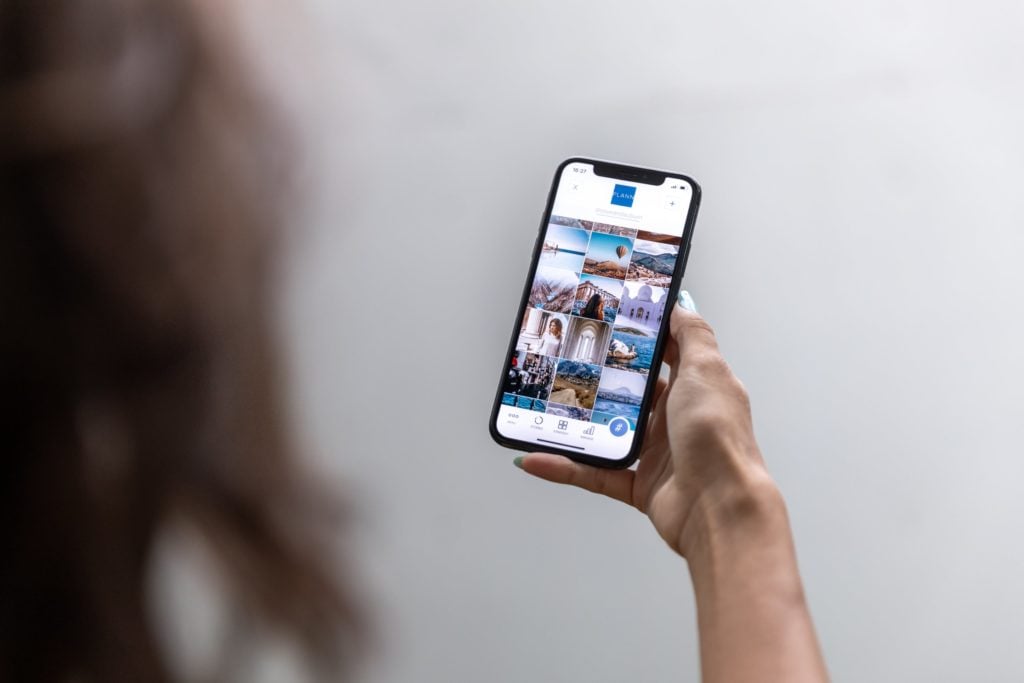Lockdown has had a radical effect on our online behaviour. We’re spending more time on the internet than ever before. No less than 98-99% of 16 to 44 year-olds now use the internet and a quarter of UK adults spent a quarter of their waking day online during lockdown, according to Ofcom.
What does this mean for your website? Well, more people are shopping online. Nine in ten Brits made online purchases since lockdown began, reports Visa, and 74% have said they’ll continue to shop online from now on.
So it’s never been more important to a) have an online presence for your business and b) ensure your website attracts customers. After all, 88% of online shoppers are less likely to return to a website after a bad experience, and 38% stop engaging with a website if the layout is unattractive.
In other words, good web design can be the difference between driving traffic to your website and driving traffic away from your site. So let’s take a look at the benefits of good website design and what you can do to attract customers and turn lookers into bookers.

What are the features of good web design?
Numerous studies have shown that good web design influences positive user outcomes. How a site looks is a key factor in building trust and changing consumer behaviour. More worryingly, one study found that bad web design can hurt more than good design helps. Here are some of the features a web development agency should add to your digital strategy to help convert traffic into sales.
UX
User experience (UX) is the term used to describe how a user feels when visiting your website. The goal is to give them a positive experience. That’s why usability and functionality should be at the top of your web design checklist. Your UX design process must, therefore, focus on providing a clear, easy, enjoyable path to conversion:
- Site and links should load quickly
- Strategically placed call to actions
- Effortless flow to the user journey
It’s been reported that every dollar invested in UX brings a massive $100 return – a return on investment of (deep breath…) 9,900%!
Check out one of our other recent posts for a deeper dive into how good ux design can benefit your business.
Easy navigation
It should be easy for users to find what they’re looking for on your site. Easy navigation helps build trust. A study by Stanford University found that ‘sites that were easy to navigate were seen as being more credible.’ The user journey from A to B (to checkout) should be intuitive and pain-free.
- Simple site structure so each step of the process flows naturally
- Consistent navigation with breadcrumb links to track their journey
- Progress bars so users know where they are in the sales process
In a nutshell, you want to eliminate any reason for users to get lost, frustrated, or confused, which may cause them to leave. For example, 61% of people said they’d leave a mobile site if they didn’t find what they were after straight away. That’s a lot of potential customers effectively walking away.

Responsive web design
More people than ever are using their phones or other devices to shop online. Mobile spending in the UK is forecast to rise 88.3% by 2023, according to GlobalData. So if your site isn’t optimised for all screen sizes, you’re in danger of losing out on potential customers. Especially as mobile users are five times more likely to give up on a website if it isn’t mobile-friendly. Ideally, your website structure should be flexible enough to:
- Automatically re-size to fit the user’s device
- Have responsive images that re-size to fit
- Offer a tailored experience for each device
Talking of positive user experience with mobiles, we’ve written a whole blog on that very subject.
Fast loading pages
47% of online shoppers expect a webpage to load within two seconds. Any longer and you risk losing them as a customer. To put that into context from a sales point of view, a one-second page delay on an e-commerce website making $100,000 a day could equate to $2.5milliion in lost sales in a year.
It’s not just your bottom line that will be affected by slow loading pages, it’s your search engine ranking. That’s because if visitors are consistently leaving your site due to slow loading pages, search engines such as Google see this as a bad user experience and rank you lower in search engine results.
Easy purchase process
Visitors to your website are more likely to make a purchase if the user journey is easy and effortless. Research shows that 28% will simply give up if the checkout process is too long or complicated.
The steps required to guide visitors towards making a purchase are often referred to as a conversion or sales funnel. It’s a great way to visualise the navigational flow of converting a potential customer into a paying customer. Software development agencies should spend time considering ways to improve, optimise, and streamline the user experience of your sales funnel so you can reap the rewards.

Why is UX important for ROI?
A bad experience on a website means the user is more likely to leave the site and spend their hard-earned money elsewhere. Numerous studies back this up:
- 88% of online customers are less likely to return to a website after a bad experience
- 76% say a website’s most important factor is how easy it makes it for them to find what they want
- 94% say their first impression of a website is based on the design
A positive user experience clearly has a positive effect on profits, so it’s vital to address common issues (such as slow loading time, lack of responsiveness across devices, and bad navigation) in your UX design strategy. To not do so means you risk losing up to 68% of visitors who leave websites they feel don’t care about their experience.
Want more insights into understanding the basics of user experience? Luckily, we’ve written a blog about that too.
Why easy navigation is important for ROI
One of the golden rules of web design is to eliminate every excuse for a user to leave a site. The harder it is for a user to navigate your site the more likely they are to give up. It’s said that 55% of visitors spend just 15 seconds scanning a site so you’ve got to make it easy for them to find what they’re looking for.
A well-organised, well-designed site makes it easier for users to interact. Your navigation menu should be easy to see and easy to use. The design should be clutter-free to avoid unnecessary confusion. And your call to action buttons should be prominent and aid the flow of the sales funnel.
- Clearly labelled navigation can improve your search engine ranking
- Easy-to-use navigation can improve your conversion rate
In summary, easy navigation leads to a happier user experience, which increases the likelihood of a purchase.

What makes a good conversion funnel?
Depending on your business goals, your website’s conversion rate could refer to an online purchase, newsletter sign-up, form submission, booking, download, or phone call.
But no matter what ‘conversion’ means in the context of your website’s performance, a good conversion funnel that turns prospects to customers usually has the following flow:
Awareness: ensuring your website is SEO-optimised means your target audience is more likely to find you when they search for a solution to their problem
Evaluation: clearly highlight the benefits of choosing you over your competitors by making it easy for the user to discover the value of your brand and service offering
Action: avoid the dreaded ‘abandoned basket’ by streamlining your purchase page so the pricing is clear, payment is simple, and there’s an incentive to come back
To help your conversion funnel inspire even more customers to take action, here are some tried and tested elements to include to positively impact both UX and ROI:
- Use a simple and logical flow with clear calls to action to guide the user
- Add social proof, such as user reviews, testimonials and case studies
- Have a clear and simple pricing page with multiple secure payment options

Should you invest in bespoke software?
So now we know good web design can boost sales, let’s investigate the benefits of choosing a bespoke website rather than off-the-shelf software such as WordPress, Drupal, and Joomla which come with ready-made templates and integration.
Tailored to your business
A bespoke website can be personalised to both your business goals and your users’ specific needs. As a result, their experience on your site will feel more bespoke to them.
Stand out from the crowd
Designed to showcase your brand USPs and e-commerce needs, a bespoke site can give you a competitive advantage over your competitors and a unique user experience.
Search engine friendly
From the start of the project, the web design agency can incorporate the SEO keywords and phrases most important to you, your customers, and your search engine ranking.
What you need…when you need it
A bespoke site eliminates unnecessary features in favour of only what you need. Plus, it can grow with you, with the flexibility to adapt to reflect your evolving business needs.
In safe hands
‘Out-of-the-box’ software can be vulnerable to hackers who target well-known issues. As you have complete control over a bespoke site, it is generally safer and more secure.
If you’d like to take a deeper dive into bespoke software vs. off the shelf, we’ve got you covered. Check out this blog.
As an award-winning digital agency with over 15 years’ experience, we’d be happy to discuss your digital strategy and web design and development.
Excited to get started? So are we. Click here to contact us about your project.

Leave a Reply